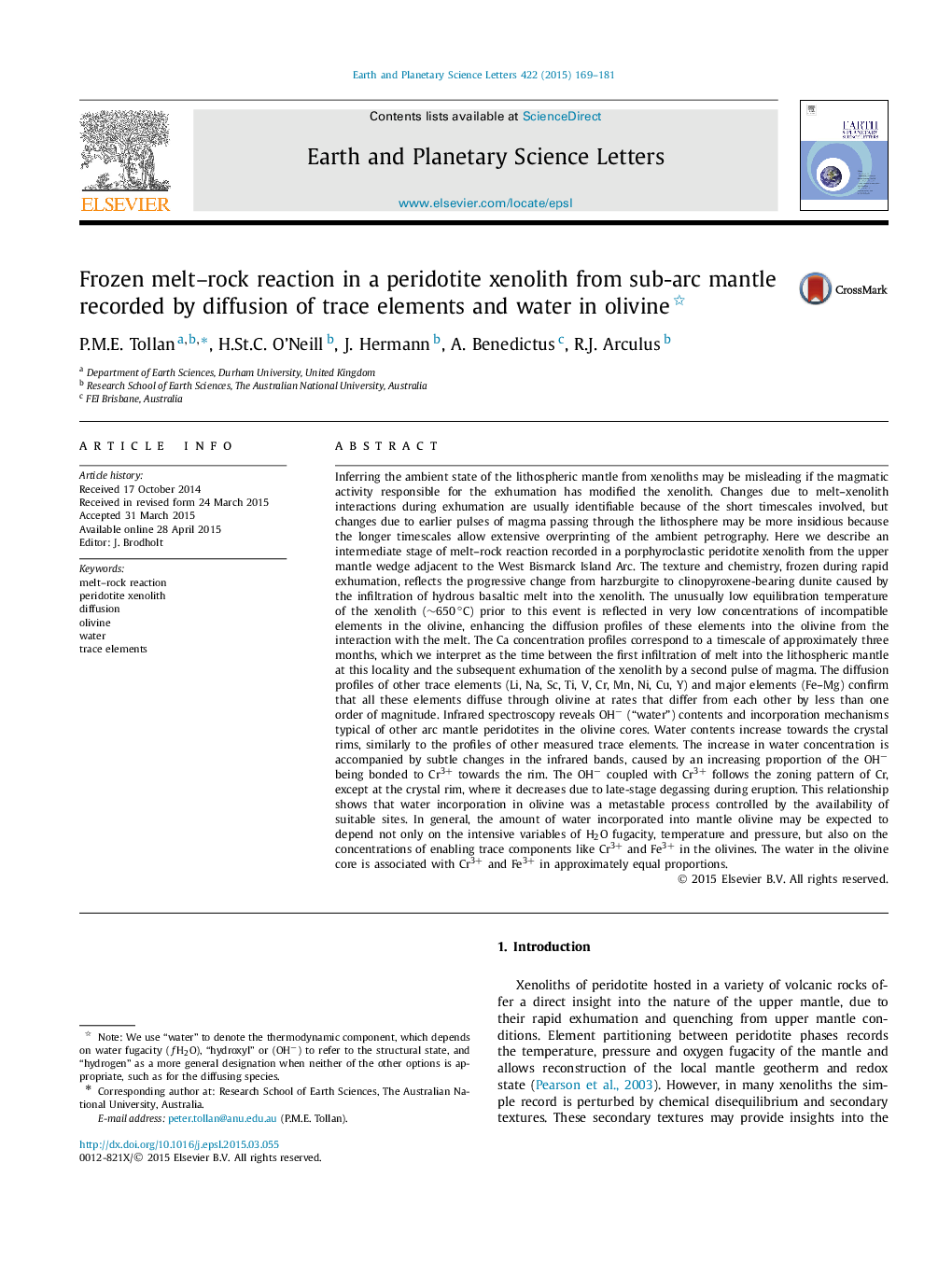| کد مقاله | کد نشریه | سال انتشار | مقاله انگلیسی | نسخه تمام متن |
|---|---|---|---|---|
| 6428344 | 1634734 | 2015 | 13 صفحه PDF | دانلود رایگان |

• Porphyroclastic texture in an arc peridotite xenolith formed in response to hydrous melt–rock reaction.
• Cryptic zoning of trace elements and water measured in olivine porphyroclasts.
• Ca diffusion modelling reveals melt–rock reaction timescale of ∼1 month.
• Similar diffusion rates of most chemical species in olivine.
• Water incorporation in olivine strongly dependent on concentrations of Cr3+ and Fe3+.
Inferring the ambient state of the lithospheric mantle from xenoliths may be misleading if the magmatic activity responsible for the exhumation has modified the xenolith. Changes due to melt–xenolith interactions during exhumation are usually identifiable because of the short timescales involved, but changes due to earlier pulses of magma passing through the lithosphere may be more insidious because the longer timescales allow extensive overprinting of the ambient petrography. Here we describe an intermediate stage of melt–rock reaction recorded in a porphyroclastic peridotite xenolith from the upper mantle wedge adjacent to the West Bismarck Island Arc. The texture and chemistry, frozen during rapid exhumation, reflects the progressive change from harzburgite to clinopyroxene-bearing dunite caused by the infiltration of hydrous basaltic melt into the xenolith. The unusually low equilibration temperature of the xenolith (∼650 °C) prior to this event is reflected in very low concentrations of incompatible elements in the olivine, enhancing the diffusion profiles of these elements into the olivine from the interaction with the melt. The Ca concentration profiles correspond to a timescale of approximately three months, which we interpret as the time between the first infiltration of melt into the lithospheric mantle at this locality and the subsequent exhumation of the xenolith by a second pulse of magma. The diffusion profiles of other trace elements (Li, Na, Sc, Ti, V, Cr, Mn, Ni, Cu, Y) and major elements (Fe–Mg) confirm that all these elements diffuse through olivine at rates that differ from each other by less than one order of magnitude. Infrared spectroscopy reveals OH− (“water”) contents and incorporation mechanisms typical of other arc mantle peridotites in the olivine cores. Water contents increase towards the crystal rims, similarly to the profiles of other measured trace elements. The increase in water concentration is accompanied by subtle changes in the infrared bands, caused by an increasing proportion of the OH− being bonded to Cr3+ towards the rim. The OH− coupled with Cr3+ follows the zoning pattern of Cr, except at the crystal rim, where it decreases due to late-stage degassing during eruption. This relationship shows that water incorporation in olivine was a metastable process controlled by the availability of suitable sites. In general, the amount of water incorporated into mantle olivine may be expected to depend not only on the intensive variables of H2O fugacity, temperature and pressure, but also on the concentrations of enabling trace components like Cr3+ and Fe3+ in the olivines. The water in the olivine core is associated with Cr3+ and Fe3+ in approximately equal proportions.
Journal: Earth and Planetary Science Letters - Volume 422, 15 July 2015, Pages 169–181